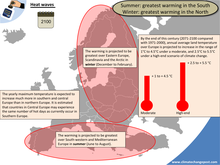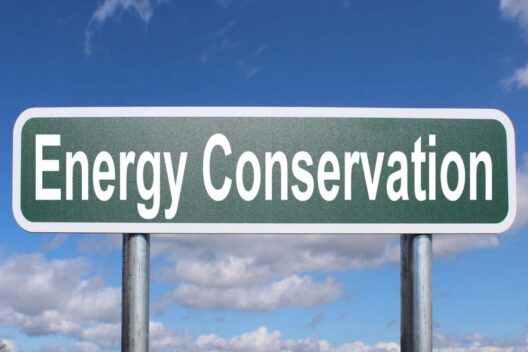As the seasons shift from summer to autumn, many individuals across various regions experience a phenomenon that has become increasingly pronounced: fall heat waves. These unseasonable surges in temperature prompt inquiries about their frequency and implications. Are fall heat waves emerging as the new norm? This question sparks intrigue, opening a dialogue regarding climate patterns, environmental shifts, and their broader ramifications.
Historically, autumn has been perceived as a transitional season characterized by dwindling heat and the approach of winter. Yet, recent observations have unveiled a stark deviation from this expectation. Record-high temperatures during the fall months have become conspicuous, perplexing meteorologists and environmental enthusiasts alike. This aberration raises a pivotal query: what catalyzes these unexpected fall heat waves?
The primary driver behind this phenomenon is the ongoing crisis of climate change. As global temperatures rise, the seasons themselves undergo metamorphosis. The traditional demarcation of seasons is becoming muddled. Atmospheric changes, primarily driven by human activities such as fossil fuel combustion and deforestation, have resulted in persistent alterations to weather patterns. Consequently, warm air masses, which would typically retreat as autumn descends, linger longer into the season. This warming trend is not merely anecdotal; comprehensive climatic data substantiates the existence of such heat waves.
In addition to climate change, the urban heat island effect exacerbates the frequency and intensity of fall heat waves. Urban environments, with their extensive concrete surfaces, retain heat more effectively than rural areas. In cities, where populations are dense, the accumulation of heat from buildings, vehicles, and human activities creates localized temperature anomalies. As urbanization proliferates, the implications of this phenomenon warrant significant concern. Urban dwellers may find themselves contending with uncomfortably warm conditions even as fall foliage begins to paint the landscapes.
Moreover, the relationship between atmospheric phenomena, such as El Niño and La Niña, plays a crucial role in shaping our weather patterns. These cyclical changes in sea surface temperatures in the Pacific Ocean influence atmospheric conditions globally. While traditionally associated with winter weather variations, their influence extends into the fall, further complicating predictions. As these patterns become more erratic due to climate change, the occurrence of fall heat waves may be linked to a broader spectrum of meteorological events.
Understanding the implications of fall heat waves extends beyond mere temperature fluctuations; it penetrates into the spheres of agriculture, ecology, and human health. Farmers, for instance, face precarious challenges as fall heat waves can disrupt planting and harvest schedules. Crops that rely on specific temperature ranges for optimal growth may withstand adverse effects, undermining food security. These unforeseen climatic shifts can lead to reduced agricultural yield and heightened competition for resources.
Conversely, ecosystems are likewise affected. Flora is attuned to seasonal cues; premature warmth can trigger early bud bursts or activation of growth cycles, ultimately increasing vulnerability to frost damage. Wildlife, too, is susceptible to misalignment with their environmental cues, compelling them to adjust their behavior or migratory patterns, which can have cascading effects on the overall biodiversity within ecosystems.
Human health is another critical concern associated with fall heat waves. Elevated temperatures can exacerbate respiratory issues, cardiovascular conditions, and heat-related illnesses. Vulnerable populations, such as the elderly or those with preexisting health conditions, are disproportionately affected. Additionally, increased heat can aggravate air quality, leading to an uptick in smog and allergens, compounding health risks. The connection between climate change and public health is increasingly recognizable; thus, fall heat waves serve as a barometer for wider environmental health trends.
Despite these dire implications, the fascination with fall heat waves endures, igniting curiosity among scientists and the public alike. This intrigue stems from the convergence of climate science and everyday life. The ennui of autumn, once a season punctuated by the crispness of fallen leaves, is supplanted by uncertainty and unpredictability. Observers ponder the implications of these shifts, contemplating what it means for future generations. As weather patterns evolve, the nostalgia of traditional autumns becomes tinged with concern over the realities of climate change.
The growing acknowledgment of fall heat waves as a potential permutation of climate abnormalities underscores a critical need for collective action. Addressing climate change necessitates a multifaceted approach, encompassing policy reform, innovative technology, conservation efforts, and public education. Awareness is the first step toward mobilizing communities to respond proactively—a necessary movement to not only mitigate climate change effects but to adapt to the realities that lie ahead.
In conclusion, while the transition from summer to fall has historically invoked images of cooling breezes and vibrant foliage, the advent of fall heat waves signifies a profound shift influenced by anthropogenic climate change. The question of whether these heat waves represent a new normal may be difficult to answer definitively, yet their increasing prevalence highlights pressing concerns for health, agriculture, and ecosystems. Through dedicated efforts, society can strive toward a sustainable future where the seasons retain their defined characteristics, unclouded by the shadows of climate abnormalities.







